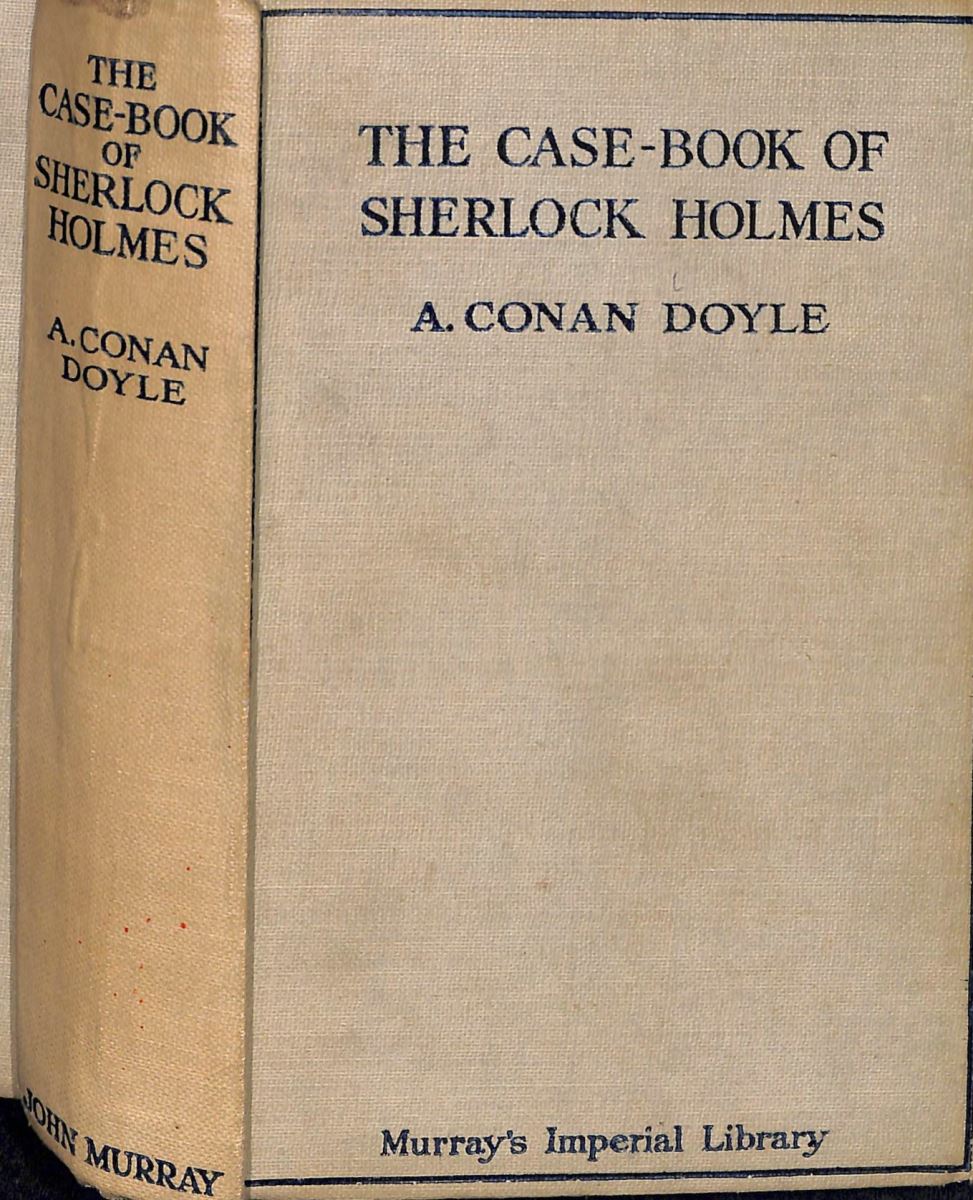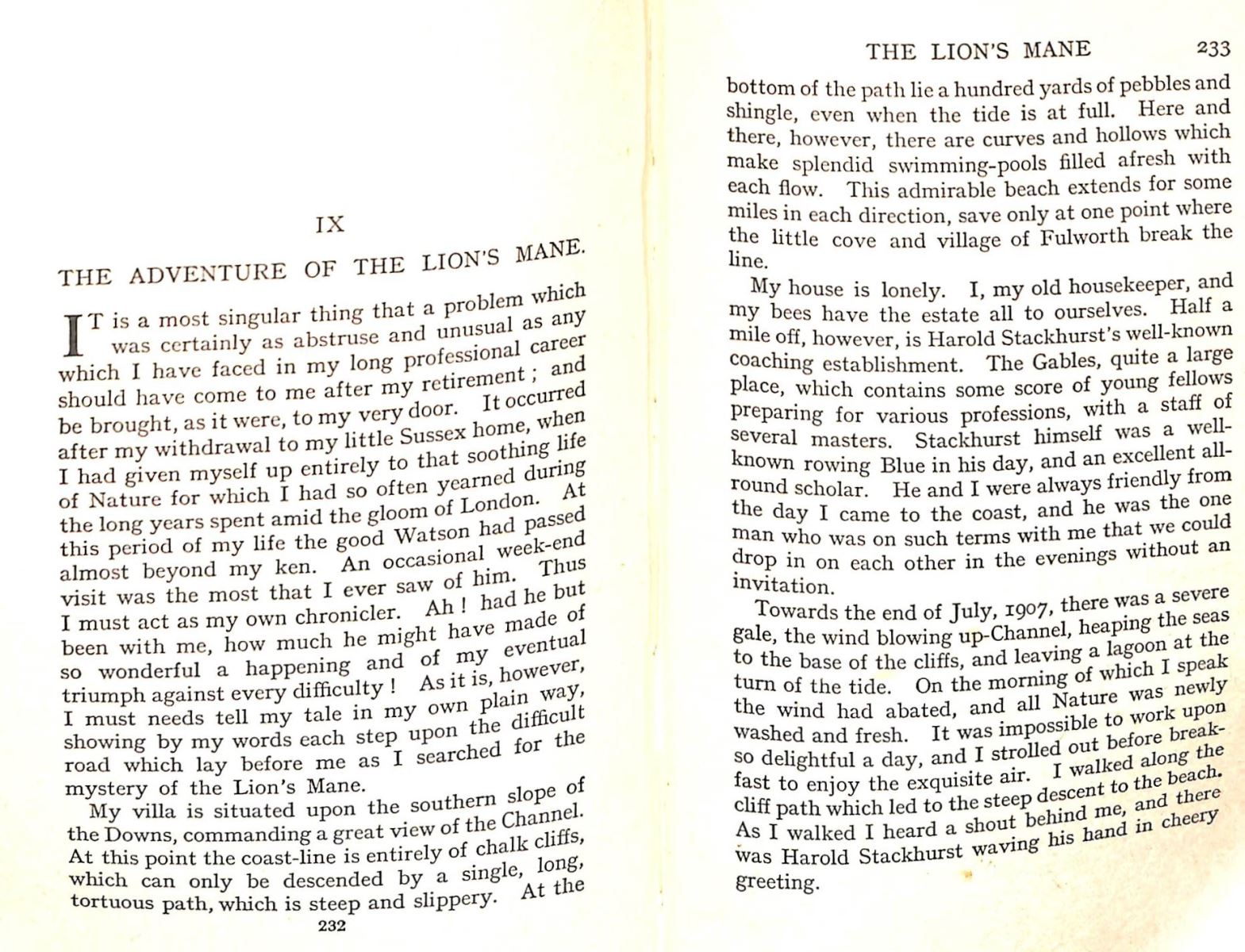Behold the Lion’s Mane!
“My villa is situated upon the southern slope of the Downs, commanding a great view of the Channel.“ So Sherlock Holmes tells us in the story, The Adventure of the Lion’s Mane.
First published in Liberty magazine in 1926, it appeared in The Case-Book of Sherlock Holmes during the following year. This is the final collection of Sir Arthur Conan Doyle’s short stories featuring Sherlock Holmes.
The Adventure of the Lion’s Mane is unusual because it is one of only two stories in the Sherlock Holmes Canon that it told by Holmes himself. Nor is any actual crime committed in the story.
Sherlock Holmes has retired to the Sussex Downs, where as he tells us; “My house is lonely. I, my old housekeeper, and my bees have the estate all to ourselves.“ Holmes has become a bee keeper, giving himself up, “…entirely to that soothing life of Nature for which I had so often yearned during the long years spent amid the gloom of London.“
However, this idyll is shattered by a dying man. Whilst out walking by the sea, Sherlock Holmes meets Harold Stackhurst. The latter is head of The Gables, which is “…a large place, which contains some score of young fellows, preparing for various professions, with a staff of several masters.“
Holmes and Stackhurst happen upon Fitzroy McPherson, who is the science master at The Gables. McPherson has been swimming in a nearby saltwater lagoon. After collapsing at the feet of Holmes and Stackhurst, McPherson utters the words “the lion’s mane“ just before he dies.
Sherlock Holmes observes that McPherson’s back is “…covered with dark red lines as though he had been terribly flogged by a thin wire scourge. The instrument with which this punishment had been inflicted was clearly flexible, for the long, angry weals, curved round his shoulders and ribs.“
“Who had done this barbarous deed?" asks Sherlock Holmes. Initially suspicion falls upon the mathematics master at The Gables, Ian Murdoch. He is Fitzroy McPherson’s rival for the affections of a Miss Maud Bellamy. However, Murdoch is exonerated when he too suffers a near fatal attack from the killer.
But as Sherlock Holmes remarks; “That phrase “Lion’s Mane“ haunted my mind. I knew that I had seen it somewhere in an unexpected context.“ This turns out to be a book titled Out of Doors. In a shout of triumph, Holmes exclaims:
“Cyanea!“ I cried.
“Cyanea! Behold the Lion’s Mane!“
The ‘villain‘ is none other than a Lion’s Mane jellyfish (Cyanea capillata), which Sherlock Holmes describes as being “…as dangerous to life as, and far more painful than, the bite of the cobra.“ However, in reality the stings of the jellyfish are not usually fatal - except to people who have existing allergies or health conditions. In The Adventure of the Lion’s Mane the victim Fitzroy McPherson has a weak heart.
The Lion’s Mane jellyfish derives its name from its thick mane of hundreds of long, flowing tentacles. These are armed with many stinging cells. Brown to reddish in colour, the Lion’s Mane jellyfish is found off British coasts in the summer months.
Interestingly, the aforementioned volume Out of Doors is a real book. Published in 1874, it was written by J.G. Wood. In the book Wood recounts his own experience of being stung by a Lion’s Mane jellyfish: “…the pulsation of the heart would cease for a time that seemed an age, and then it would give six or seven leaps, as if it would force its way through the chest.“
The Adventure of the Lion’s Mane is in my opinion not a classic Sherlock Holmes story. At this period of his life Sir Arthur Conan Doyle only wrote the occasional Holmes story - usually for purely financial reasons. However, such is Conan Doyle’s skill as a writer that it is still well worth reading.
END.


Related
Comments
Comments are disabled for this post.

 to add an item to your Itinerary basket.
to add an item to your Itinerary basket.





